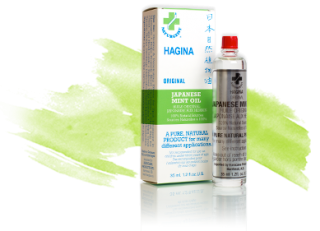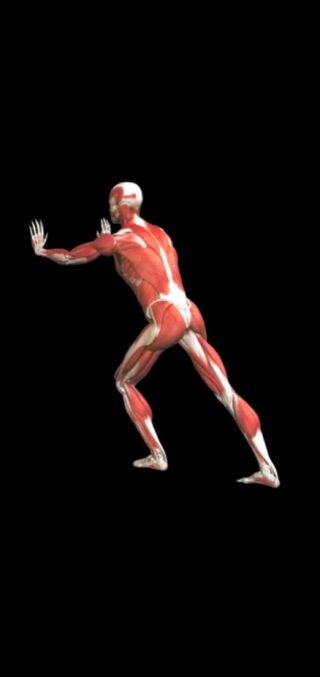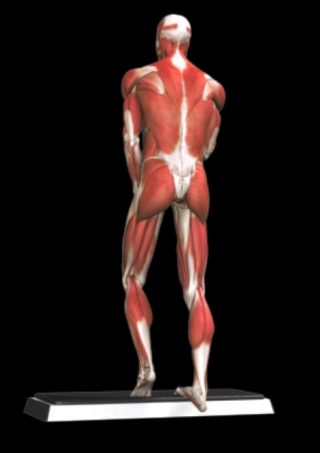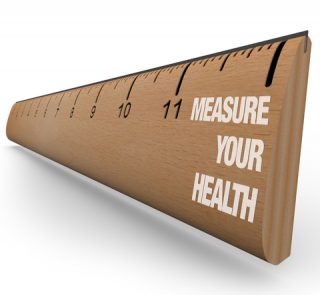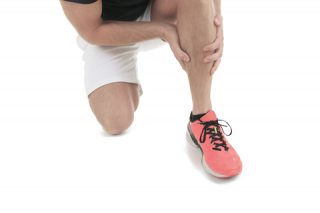
Written by Michelle Champlin BSc Pod., M.Ch.S., S.R., Ch., (UK)
Compartment Syndrome is a medical condition, usually affecting the leg or arm, which results from a pressure build up in an enclosed body space. Normally occurring after an injury, due to bleeding or swelling, it can lead to circulation problems to and from the affected tissues. It can become an emergency, resulting in surgery to alleviate the pressure.
After an injury or even strenuous exercise over-use, pressure can build up in a ‘compartment’, which contains groups of organs or muscles. These groups are surrounded by strong connective tissue called ‘fascia’. Because this fascia cannot expand or stretch, the blood or edema from the injury collects within the compartment and can affect blood flow to or from the area.
The legs or arms are most commonly affected, frequently due to a trauma such as a broken bone, developing rapidly over a period of hours or days.
Other causes include:
• Post-surgical complications
• Burns
• Crush injury
• Blood clot
• Over-exercise
• Over-tight bandaging / compression
Over-use Compartment Syndrome due to exercising is more of a chronic, or longer-term, injury and is the one most commonly seen in our clinic, affecting the lower limbs.
Exertional compartment syndrome can affect the glute area, thigh or calf area. Compartment syndrome can be mistaken for the common runner’s injury – shin splints. Your tibia bone in the lower leg (shin bone) is bordered by muscles on both sides. The anterior, or outside, side is most commonly affected in Compartment Syndrome for runners. In Compartment Syndrome, you may also notice pain, swelling and pain with passive stretching.
Chief Podiatrist Michelle Champlin explains “Shin splints more commonly affect the posterior, or inside of the shin bone. Compartment syndrome can strike the legs following vigorous exercise such as running, increasing blood supply to the muscles of the leg, but with little room to expand, as this area is bordered by your tibia bone, your fibula bone at the rear and the ‘crural fascia’ surrounding.”
Exertional Compartment Syndrome can cause leg pain during and long after exercising
It is critical to see your Doctor or Podiatrist if you experience leg pain before, during or after a run. As a rough guide, compartment syndrome will start after you’ve started exercising, then persist long after you’ve stopped. Shin splints will tend to cause pain even before you start running, persisting and probably worsening during a run but feeling almost immediately better as soon as you stop. Shin splint pain will generally tend to be felt along the inside of your shin bone, with Compartment Syndrome more often felt along the outside of the shin.
Compartment Syndrome tends to affect those exercising very frequently (hence it’s an overuse type injury for runners), who are relatively thin and fit with low body fat (and hence little room for swelling / expansion.
See your Podiatrist or GP straight away if you suspect Compartment Syndrome. For either shin splints or Compartment Syndrome, early intervention will reduce your recovery time. (See here for more information on shin splint treatment). Compartment Syndrome will require immediate active rest, sometimes for several months. Extreme cases can require surgical intervention to reduce pressure. Your Podiatrist will also need to assess your biomechanics, running style and supervise your gradual return to running / training.
Whether elite athlete training for your next endurance ultra marathon or casual jogger, if you are experiencing any form of lower limb pain, make an immediate appointment with the UAE’s expert Podiatrists, Dubai Podiatry Centre on +971 4 3435390.
بقلم ميشيل شامبلين
متلازمة المقصورة هي حالة طبية، تؤثر عادةً على الساق أو الذراع، وتنتج عن تراكم الضغط في مساحة مغلقة من الجسم. يحدث عادة بعد الإصابة، بسبب النزيف أو التورم، ويمكن أن يؤدي إلى مشاكل في الدورة الدموية من وإلى الأنسجة المصابة. يمكن أن تصبح حالة طارئة، مما يؤدي إلى إجراء عملية جراحية لتخفيف الضغط.
بعد الإصابة أو حتى الإفراط في ممارسة التمارين الرياضية، يمكن أن يتراكم الضغط في “الحجرة”، التي تحتوي على مجموعات من الأعضاء أو العضلات. هذه المجموعات محاطة بنسيج ضام قوي يسمى “اللفافة”. نظرًا لأن هذه اللفافة لا يمكنها التوسع أو التمدد، فإن الدم أو الوذمة الناتجة عن الإصابة تتجمع داخل الحجرة ويمكن أن تؤثر على تدفق الدم من المنطقة وإليها.
الأكثر شيوعًا هي إصابة الساقين أو الذراعين، وغالبًا ما يكون ذلك نتيجة لصدمة مثل كسر العظام، والتي تتطور بسرعة على مدار ساعات أو أيام.
تشمل الأسباب الأخرى ما يلي:
• مضاعفات ما بعد الجراحة
• الحروق
• اصابة حادث
• جلطة دموية
• الإفراط في ممارسة الرياضة
• الضمادات/الضغط المفرط
تعد متلازمة الإفراط في استخدام المقصورة بسبب ممارسة الرياضة بمثابة إصابة مزمنة أو طويلة الأمد وهي الأكثر شيوعًا في عيادتنا، حيث تؤثر على الأطراف السفلية.
يمكن أن تؤثر متلازمة الحيز الجهدي على منطقة الألوية أو الفخذ أو الساق. يمكن الخلط بين متلازمة المقصورة وبين إصابة العداء العادي – جبائر قصبة الساق. يحد عظم الساق الموجود في أسفل الساق (عظم الساق) عضلات من كلا الجانبين. يتأثر الجانب الأمامي أو الخارجي بشكل شائع في متلازمة المقصورة عند العدائين. في متلازمة المقصورة، قد تلاحظ أيضًا الألم والتورم والألم أثناء التمدد السلبي.
تشرح رئيسة أطباء الأقدام ميشيل شامبلين أن “جبائر قصبة الساق تؤثر بشكل أكثر شيوعًا على الجزء الخلفي أو الداخلي من عظمة الساق. يمكن لمتلازمة المقصورة أن تصيب الساقين بعد ذلك
ممارسة التمارين الرياضية القوية مثل الجري، تزيد من تدفق الدم إلى عضلات الساق، ولكن مع وجود مساحة صغيرة للتوسع، حيث أن هذه المنطقة يحدها عظم الساق، وعظم الشظية في الخلف و”اللفافة المغبنية” المحيطة بها.
يمكن أن تسبب متلازمة الحيز الجهدي ألمًا في الساق أثناء ممارسة التمارين وبعدها بفترة طويلة
من الضروري أن ترى طبيبك أو طبيب الأقدام إذا كنت تعاني من آلام في الساق قبل أو أثناء أو بعد الجري. كدليل تقريبي، ستبدأ متلازمة الحيز بعد بدء ممارسة الرياضة، ثم تستمر لفترة طويلة بعد التوقف. تميل جبائر قصبة الساق إلى التسبب في الألم حتى قبل البدء في الجري، وتستمر وربما تتفاقم أثناء الجري، ولكنها تشعر بالتحسن على الفور تقريبًا بمجرد التوقف. يميل ألم جبيرة الساق بشكل عام إلى الشعور به على طول الجزء الداخلي من عظمة الساق، بينما يتم الشعور بمتلازمة المقصورة في كثير من الأحيان على طول الجزء الخارجي من الساق.
تميل متلازمة المقصورة إلى التأثير على أولئك الذين يمارسون الرياضة بشكل متكرر جدًا (وبالتالي فهي إصابة من النوع المفرط للعدائين)، الذين يكونون نحيفين نسبيًا ويتناسبون مع انخفاض نسبة الدهون في الجسم (وبالتالي هناك مساحة صغيرة للتورم / التوسع.
قم بزيارة طبيب الأقدام أو الطبيب العام على الفور إذا كنت تشك في الإصابة بمتلازمة المقصورة. بالنسبة لجبائر قصبة الساق أو متلازمة المقصورة، فإن التدخل المبكر سيقلل من وقت التعافي. (انظر هنا لمزيد من المعلومات حول علاج جبيرة قصبة الساق). تتطلب متلازمة المقصورة راحة نشطة فورية، أحيانًا لعدة أشهر. الحالات القصوى يمكن أن تتطلب التدخل الجراحي لتقليل الضغط. سيحتاج طبيب الأقدام الخاص بك أيضًا إلى تقييم الميكانيكا الحيوية لديك وأسلوب الجري والإشراف على عودتك التدريجية إلى الجري / التدريب.
سواء كان الرياضيون النخبة يتدربون لسباق الماراثون الفائق التحمل أو الركض العادي، إذا كنت تعاني من أي شكل من أشكال آلام الأطراف السفلية، حدد موعدًا فوريًا مع خبراء طب الأقدام في الإمارات العربية المتحدة، مركز دبي للعناية بالاقدام على الرقم ٠٤٣٤٣٥٣٩٠



